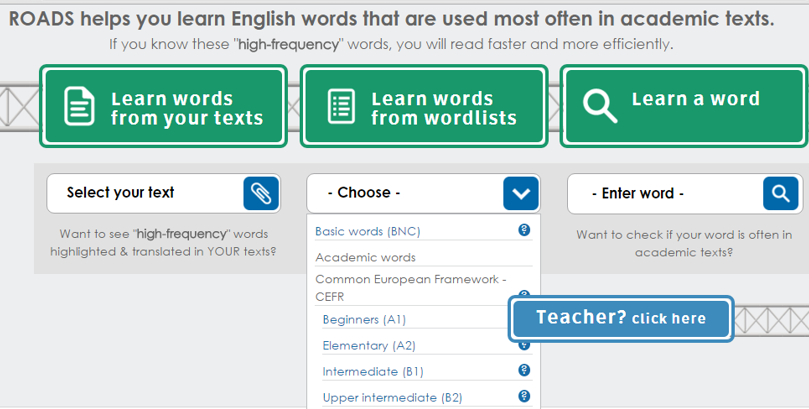These curated wordlists are available on the Roads to Academic Reading website (http://Roadscefr.iucc.ac.il),
Within the ECOSTAR project, two ‘filters’ were used to curate content of CEFR wordlists:
Filter #1: Inter-rater agreement
Five highly experienced tertiary level EFL teachers sifted through thousands of CEFR words. Levels of inter-rater agreement were used to identify words which expert raters considered most likely to be useful for EAP students who need to learn key vocabulary in both the academic and occupational domains.
Filter #2: Identification of ‘overlaps’
CEFR wordlists contain many words that also appear on other research-based high-frequency wordlists, such as Nation’s (2004) BNC lists, Coxhead’s (2000) Academic Word List and the recently published Academic Vocabulary List (Davies & Gardener, 2013).
These ‘overlaps’ serve as an additional filter to help teachers and learners make smarter decisions about which words to focus on first.
Roads to Academic Reading offers three different tools that identify ‘overlaps’ between CEFR vocabulary and other high-frequency wordlists.

Tool #1: Wordlists
ROADS wordlists provide translations for words at each of the six CEFR levels. In addition to translations into Hebrew and Arabic, hyperlinks to flashcards are provided for words that expert raters considered most likely to be useful for EAP students.

Tool #2: ‘also on’ feature
ROADS flashcards include an ‘also on’ feature. This feature shows:
- which CEFR levels the target word appears on.
- which additional high-frequency wordlists (BNC, AWL, AVL) the target word appears on.
Tool #3: ROADS Text Profiler and Translation Table
Teachers and students can load any digital text into the ROADS Text Profiler.
This unique software will:
- identify and highlight CEFR vocabulary that appears in users’ uploaded texts.
- generate a printable translation table of CEFR words in the users’ texts, with possible translations into Hebrew or Arabic.
- show how many additional research-based wordlists the target word appears on.
